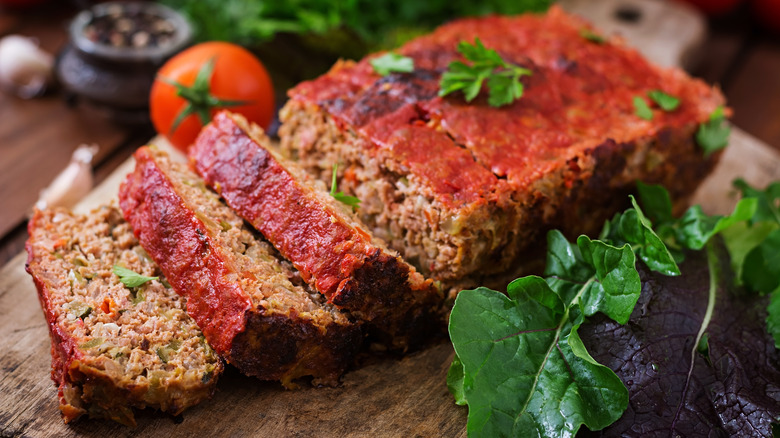meatthesavages.com – Meatloaf is a cherished dish that has become a staple in households across the world. Known for its hearty and satisfying nature, meatloaf is a baked dish made primarily with ground meat combined with a variety of ingredients to enhance flavor and texture. This versatile dish is beloved for its comforting qualities and adaptability to different culinary traditions.
Origins and Evolution
The concept of meatloaf dates back to ancient times, with various cultures creating their own versions of ground meat mixed with spices and other ingredients. In the United States, meatloaf gained popularity during the Great Depression as a way to stretch limited resources. By incorporating inexpensive fillers like breadcrumbs, oats, or vegetables, families could create a nutritious and filling meal.
Ingredients and Preparation
The core of any meatloaf recipe is ground meat, typically beef, pork, or a mixture of both. However, variations using turkey, chicken, or plant-based alternatives have emerged to cater to different dietary preferences. To bind the meat, ingredients such as eggs and breadcrumbs are essential, while onions, garlic, and herbs provide depth of flavor. A glaze made from ketchup, barbecue sauce, or a tangy tomato mixture is often spread on top to add a sweet and savory finish.
Cooking Techniques
Meatloaf is traditionally baked in an oven, allowing the flavors to meld and the meat to cook evenly. It is usually shaped into a loaf form and placed in a loaf pan or on a baking sheet. Some variations include wrapping the meatloaf in bacon, which adds a smoky flavor and helps retain moisture. The cooking time varies depending on the size and ingredients, but the goal is to achieve a perfectly cooked, moist interior with a slightly caramelized exterior.
Cultural Significance
Meatloaf is a quintessential comfort food, often associated with home-cooked meals and family gatherings. Its appeal lies in its simplicity and the ability to customize it according to personal tastes and available ingredients. In many households, meatloaf recipes are passed down through generations, each with its own unique twist that reflects family traditions.
Variations Around the World
While meatloaf is a classic American dish, its variations can be found globally. In Germany, “Falscher Hase” (literally “false hare”) is a similar dish often served with boiled eggs in the center. In Italy, “polpettone” might include Italian herbs and cheeses. These adaptations highlight the universal appeal of combining ground meat with flavorful ingredients to create a satisfying meal.
Conclusion
Meatloaf’s enduring popularity can be attributed to its comforting nature, versatility, and ability to bring families together around the dinner table. Whether enjoyed as a traditional recipe or a modern twist, meatloaf remains a beloved dish that continues to warm hearts and satisfy appetites worldwide. Its adaptability ensures that it will remain a staple in kitchens for generations to come.

